Mongolian Winter Temperature: Surviving the Brutal Season and The Fascinating Nine Nines Tradition
Contact us for travel suggestions
Imagine facing a winter so fierce that vodka freezes solid. In Mongolia, winter isn’t just a season; it’s a powerful force that shapes the people and their culture. The average temperature during these months can plunge to extreme lows, often reaching -30°C (-22°F) or lower. Mongolians rely on a unique system called the Nine Nines tradition to endure these brutal months. This ancient guide divides winter into nine cycles of nine days each, marking the stages through Mongolia’s relentless winter landscape.
The Nine Nines tradition is more than a calendar. It’s a testament to the resilience and harmony Mongolians find in nature’s extremes. Long before weather forecasts, nomadic Mongolians used this method to navigate the winter, knowing when to move herds or brace for the coldest days. This survival wisdom reflects the essence of nomadic life in Mongolia: adapting to nature’s rhythm and finding strength even in one of Earth’s harshest climates.
If you’ve ever wondered how people thrive in such severe conditions, the Nine Nines tradition holds the answer. It’s a journey through cycles that test patience and strength, guiding Mongolians as they await the first signs of spring.

The Origin and Meaning of the Nine Nines
The Nine Nines is a centuries-old roadmap developed long before modern meteorology. Starting from the winter solstice in late December, each nine-day period reflects a new winter phase. For nomadic herders, these stages are vital, signaling when to seek shelter or prepare for the warming days of spring.
This tradition represents Mongolians’ respect for nature’s cycles, the land they depend on, and the distinct Mongolian weather. The Nine Nines captures a deep understanding of survival, resilience, and the seasonal shifts that have guided Mongolians for generations.
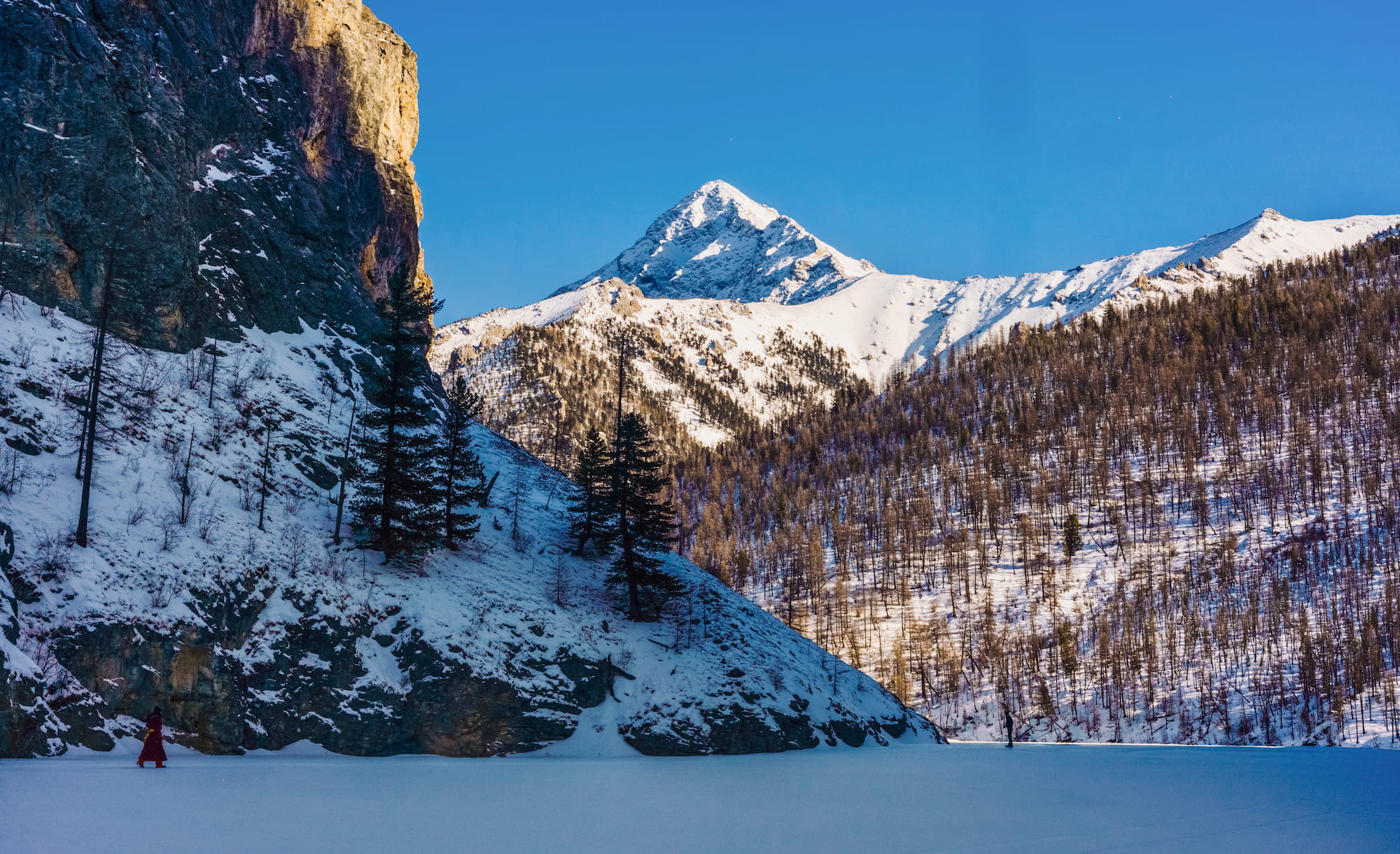
How the Nine Nines Help Mongolians Survive the Harshest Winter
Each phase of the Nine Nines introduces new signs, guiding Mongolians through one of the world’s most intense winters. During these early cycles, families prepare for temperatures below -40 °C, fortifying their gers and protecting their livestock. The intense briskness during these first cycles demands careful planning: from gathering firewood to layering the ger’s felt coverings, every action supports survival.
In nomadic life, each nine-day cycle provides a framework for resource management. Winter’s scarcity can make it challenging for animals to graze, increasing the risk of zud, a natural disaster where snow and ice cut off access to grazing land. This can devastate herds, impacting families who depend on livestock for food and income. Through centuries of experience, Mongolians have learned to read subtle signs in weather and snow patterns, knowing when to move herds or conserve resources.
A local herder recalls his grandfather’s wisdom during a brutal winter in the Gobi Desert: “During the Third Nine, the coolness was like a knife. My grandfather watched the skies and snow patterns to know when to move. We packed the ger and headed to the shelter of the Khentii Mountains. That instinct helped us survive.”
As winter progresses, the Nine Nines guide Mongolians from survival mode toward renewal, fostering patience and deep respect for nature’s patterns, knowing that each phase brings them closer to spring.
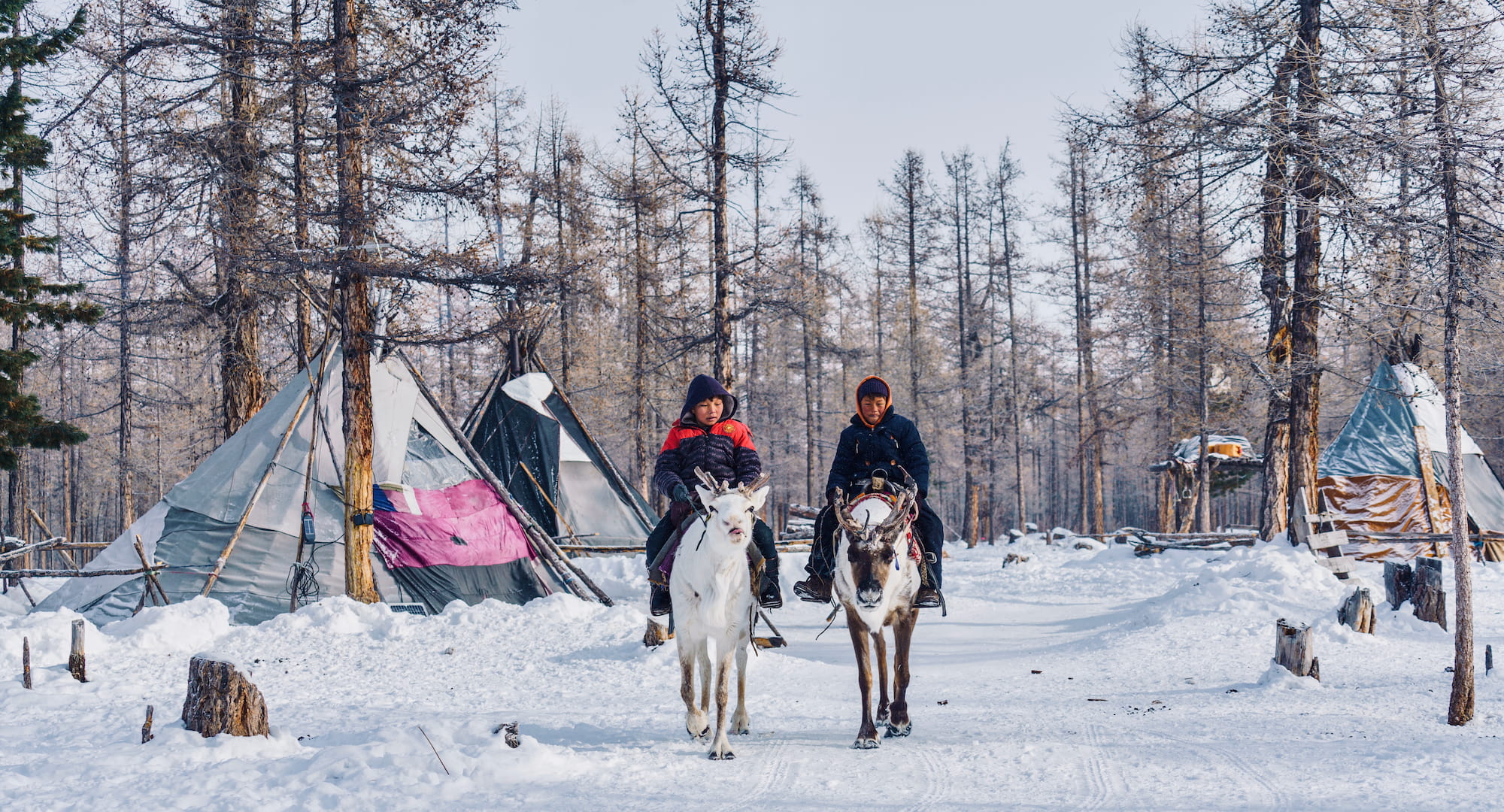
Historical Significance of the Nine Nines
The Nine Nines tradition has left its mark on Mongolian history. Between December 1237 and March 1238, the Mongol Empire undertook a legendary winter campaign against the Kievan Rus’. Led by Batu Khan and the strategist Subutai, the Mongol forces turned winter into an advantage, navigating frozen rivers and using snow-laden landscapes as cover. Where other armies fell back, the Mongols pushed forward, making winter their ally and demonstrating that even the harshest elements could be overcome with knowledge and precision. By March, they reached Moscow, a testament to military prowess and mastery of the elements.

The Nine Nines of Winter: Each Stage Unfolded
First Three Nines: Braving the Coldest Days
- First Nine (Нэг ес): December 22 - December 30
- Winter’s arrival is marked as even distilled spirits freeze. Families stock supplies, fortify their gers, and brace for winter’s full force, with night temperatures often reaching -25°C or lower. In contrast, other seasons can be milder, with temperatures around 15°C.
- Second Nine (Хоёр ес): December 31 - January 8
- The freeze deepens as homemade vodka solidifies, and frozen rivers become natural highways. Community bonds strengthen as neighbors travel on icy paths.
- Third Nine (Гурван ес): January 9 - January 17
- Winter’s grip tightens, freezing the horns of young cattle. Lakes turn into ice expanses, a silent reminder of nature’s intensity.
Middle Three Nines: Signs of Change
- Fourth Nine (Дөрвөн ес): January 18 - January 26
- Winter reaches its peak as even grown cattle’s horns freeze. Survival requires resilience, with temperatures often plummeting to -40°C in some areas.
- Fifth Nine (Таван ес): January 27 - February 4
- There is a subtle shift as rice left outside no longer freezes, hinting that the worst may be over. Though still frigid, there’s a faint sign of relief.
- Sixth Nine (Зургаан ес): February 5 - February 13
- A gradual thaw begins, and visible paths appear on snowy roads. This change brings renewed hope as the landscape starts to shift.
Final Three Nines: Transitioning to Spring
- Seventh Nine (Долоон ес): February 14 - February 22
- The snow melts from hilltops, stirring anticipation for spring. Families begin preparations for the warmer days ahead.
- Eighth Nine (Найман ес): February 23 - March 2
- Animals stir, and early signs of green appear as the Earth reawakens, signaling the near end of winter’s long hold.
- Ninth Nine (Есөн ес): March 3 - March 12
- With rivers thawing and snow fading, the Nine Nines conclude. This final phase celebrates endurance and the approach of spring.
The Ger and the Cultural Wisdom of the Nine Nines
In Mongolia, winter isn’t just a season; it’s a journey of resilience and adaptation. The Mongolian ger is at the heart of this journey, symbolizing endurance and a haven against the extreme cold. Crafted with Mongolia’s steppe in mind, the ger is designed to provide physical warmth and emotional shelter. Built with thick layers of felt made from sheep’s wool, this traditional yurt traps heat efficiently, offering a cozy retreat even as temperatures drop dangerously low. The compact, circular structure maximizes insulation, and a central stove radiates warmth, creating a comforting space amid the brutal Mongolian winter. The elevation above sea level impacts the temperature, necessitating the ger’s design to withstand significant temperature variations.
Beyond physical warmth, the ger embodies the heart of Mongolian winter life. Families gather here to share meals, tell stories, and pass down wisdom—reinforcing family bonds and fostering resilience. Young Mongolians learn about ancestors who survived fierce winters, absorbing lessons in endurance and adaptability. The ger isn’t merely a shelter; it’s a sanctuary where the spirit of the Nine Nines tradition comes alive.
The Nine Nines tradition serves as a cultural compass, guiding Mongolians through each phase of extreme frostiness. This ancient method divides winter into nine cycles of nine days, each marking new challenges. Mongolians have viewed winter as an opportunity to honor their deep connection with nature and the land for centuries. The ger reflects this philosophy; it’s designed to be dismantled, transported, and reassembled, allowing nomadic families to adapt to the shifting winter landscape. This adaptability is essential, especially when certain areas become uninhabitable due to harsh weather, speaking to a lifestyle deeply attuned to nature’s demands.
Mongolian proverbs and traditional stories highlight winter’s challenges, portraying it as beautiful and formidable. These tales emphasize patience, respect for nature’s force, and a harmonious relationship with the land—values that the Nine Nines perfectly capture. For travelers, experiencing the Nine Nines through the warmth and cultural wisdom within a ger offers profound insight into the strength and unity that defines the Mongolian people.

Modern Relevance of the Nine Nines: Survival and Celebration
In today’s technologically connected world, the Nine Nines may seem a relic of the past, yet for Mongolians, it remains a vital link to their heritage and a practical guide through each winter. Despite the conveniences of modern technology and weather forecasts, Mongolians continue to honor each winter stage of the Nine Nines, symbolizing a powerful, unbroken link to their history. This tradition celebrates the resilience and endurance embedded in Mongolian culture, particularly when facing chilly winters and challenging Mongolian winter temperatures.
Winter festivals like the Ice Festival on Lake Khövsgöl and the Eagle Festival in the Altai Mountains bring this tradition to life, attracting both locals and travelers. At the Ice Festival, visitors can witness or join locals in contests of strength and endurance on frozen Lake Khövsgöl, one of Mongolia’s natural treasures. Here, the snow-covered, several-meter-thick lake becomes a vibrant meeting point for Mongolians wrapped in brightly colored deels (traditional clothing). Events like ice skating, horse sledding, and traditional archery offer a unique glimpse into Mongolian winter activities that celebrate the resilience of Mongolian winter culture and embody the balance of harsh winters and community strength.
Meanwhile, the Eagle Festival in the Altai Mountains is a breathtaking display of eagle hunters’ skills, honed over generations. Along with their majestic golden eagles, locals soar through the frigid air, demonstrating the unique harmony between humans and birds—a tradition deeply rooted in Mongolian heritage. Watching the eagle hunters and their bond with their eagles is a powerful reminder of the interconnectedness between the Mongolian people and nature, a core theme that runs through the Nine Nines tradition.
These festivals, set against the dramatic backdrop of Mongolia’s mountain ranges and high-altitude landscapes, attract travelers worldwide, eager to experience Mongolian weather in its rawest form and witness the beauty and resilience of the Mongolian climate during its coldest months. Far from viewing winter as an obstacle, Mongolians see it as a season to honor and celebrate. For those willing to brave the chill, winter in Mongolia offers unforgettable insights into a culture that has not only learned to endure but to thrive in nature’s extremes.
Joining these celebrations during the Ninth Nine, as spring begins to emerge, is a way to feel the pulse of Mongolia—a land where the extreme continental climate shapes people who are deeply attuned to the Earth’s rhythms. It’s a lovely time for travelers to observe pleasant weather shifts and a warming landscape as Mongolia spring arrives, transitioning from freezing winters to warmer months.
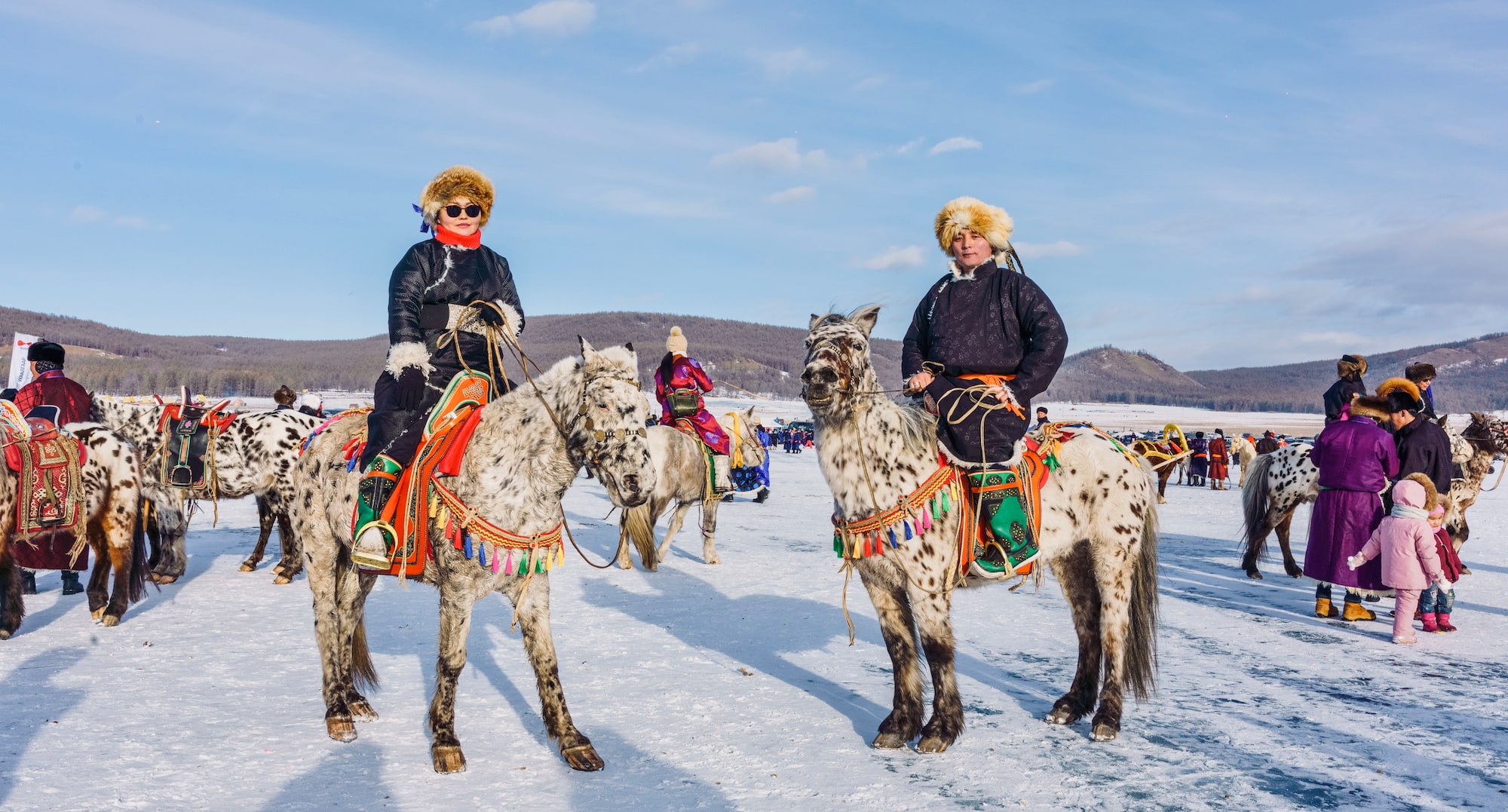
Regional Weather Patterns: Understanding Mongolia's Diverse Climate
Mongolia’s vast territory and varied geography give rise to various regional weather patterns. The country’s extreme continental climate is marked by stark contrasts, with nippy winters and warm summers creating a dynamic and ever-changing environment.
In the northern regions, such as the Khentii and Khangai mountain ranges, winters are particularly harsh, with temperatures often plummeting below -30°C. These areas experience heavy snowfall, creating a picturesque yet challenging landscape. The thick snow cover and icy conditions make it essential for locals to be well-prepared, relying on the wisdom of the Nine Nines to navigate the season.
Central Mongolia, including the capital city of Ulaanbaatar, also endures severe winters, but the summer months bring a welcome respite. Here, average temperatures can soar to 25°C or higher, transforming the landscape into a vibrant tapestry of green. The contrast between the freezing winters and the warm summers is a testament to Mongolia’s extreme continental climate, where the land undergoes dramatic transformations each season.
In the southern regions, the Gobi Desert presents a different climatic challenge. Known for its scorching summer temperatures, reaching 40°C in July, the Gobi also experiences significant temperature drops at night. This region’s low annual precipitation and arid conditions create a stark, rugged, captivating, and formidable beauty. Despite the harsh environment, the Gobi Desert is home to resilient communities that have adapted to its extremes, showcasing the incredible adaptability of the Mongolian people.
The western regions, including the Altai Mountains, are characterized by their high-altitude climate. The weather can change rapidly, with snowstorms and rain showers occurring unexpectedly. The average day temperature can vary widely, making it crucial for locals to be prepared for all eventualities. The Altai Mountains are also known for their stunning natural beauty, attracting travelers who seek to experience Mongolia’s diverse climate firsthand.
Overall, Mongolia’s weather patterns are a testament to the country’s diverse geography and the resilience of its people. From the icy winters of the north to the scorching summers of the south, Mongolia’s climate is a powerful force that shapes the land and its inhabitants. For those who visit Mongolia, understanding these regional weather patterns is critical to appreciating this remarkable country’s unique beauty and challenges.
Central Mongolia, including the capital city of Ulaanbaatar, also endures severe winters, but the summer months bring a welcome respite. Here, average temperatures in the warmest month of July can soar to 25°C or higher, with the hottest month occasionally reaching 30-40°C, transforming the landscape into a vibrant tapestry of green. This contrast between freezing winters and warm summers is a testament to Mongolia’s extreme continental climate, where the land undergoes dramatic transformations each season.
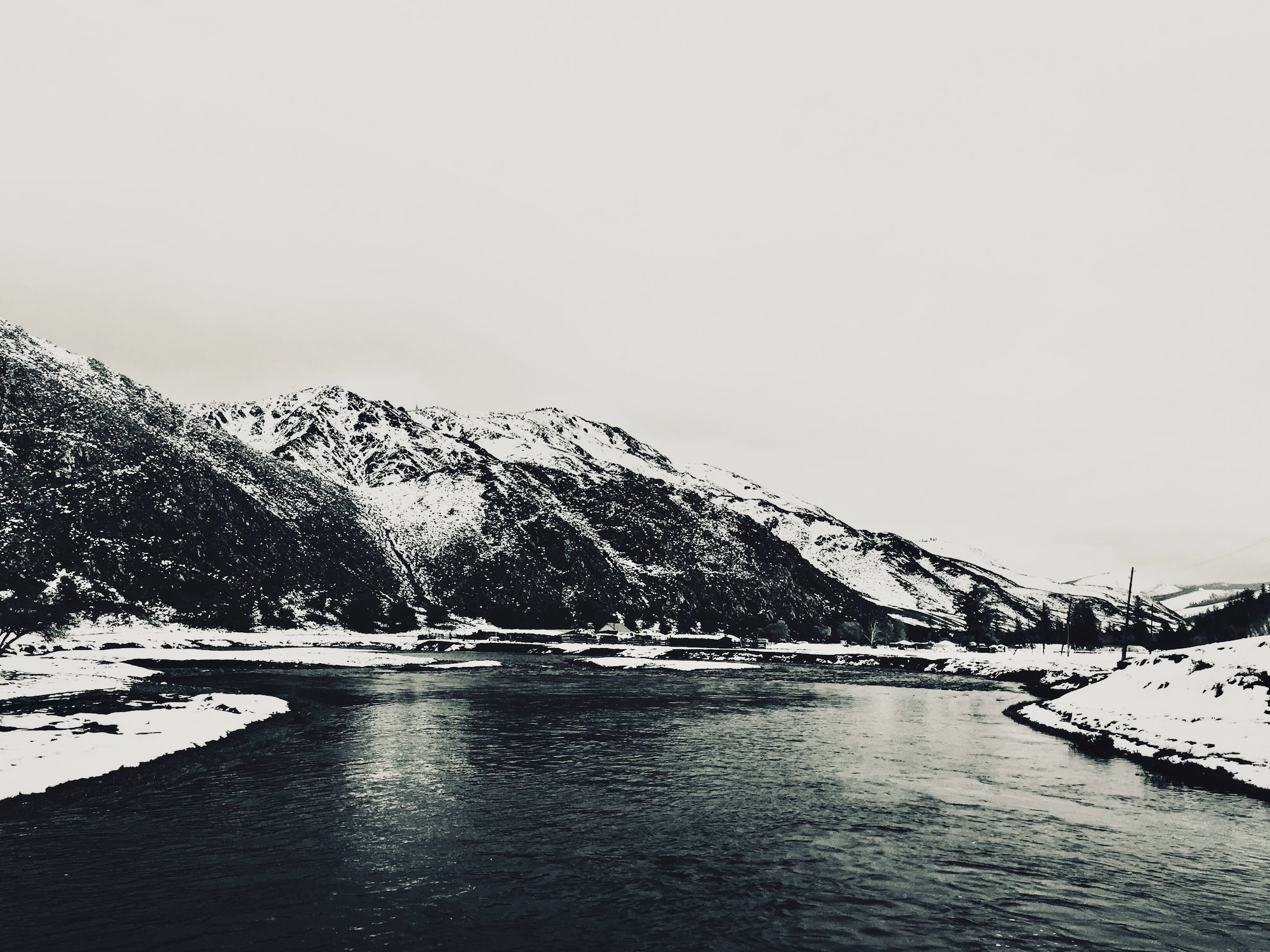
Зуд (Dzud): The Devastating Power of Mongolian Winters
Beyond the Nine Nines, Mongolia faces an even harsher force of nature known as dzud (pronounced “zood”)—a brutal winter disaster marked by relentless snowfall and freezing temperatures that prevent livestock from grazing. When a dzud strikes, entire herds face starvation, cutting deeply into the livelihoods of nomadic herders who rely on their animals for survival. The low average rainfall, particularly in regions like the Gobi Desert, which sees only 50 to 100 mm annually, exacerbates the severity of dzud by limiting grazing resource availability.
Dzud isn’t a one-time event; it’s a repeated endurance test against Mongolia’s winter temperatures. Between 1999 and 2002, Mongolia endured consecutive dzud winters, losing 12 million livestock. During this period, herders saw their animals—sources of food, wool, and income—perish as heavy snow buried grazing fields and icy winds froze water sources. This catastrophe tested the resilience of communities, requiring them to unite, support one another, and share resources to survive.
The winter of 2023-2024 brought yet another severe dzud. Night temperatures plummeted well below -40°C across much of Mongolia, creating a lethal barrier of ice and snow on grazing lands. By March 2024, over 4.7 million animals had perished, and nearly 90% of the country’s territory was affected. Herders, isolated in remote regions, struggled to access vital resources, leading to an outpouring of aid appeals from organizations worldwide. The weight of dzud cannot be overstated—it’s a battle between life and death, pushing communities to the edge of survival.
The impact of dzud is reflected in stories shared by herders across Mongolia. A citizen from Arkhangai recalls the winter of 2010, one of the harshest in memory: “During the Fifth Nine, we began to feel hopeful, thinking the worst was over. But then the dzud struck again. We lost so many animals; only through community support and knowledge passed down from elders did we survive. The Nine Nines taught us when to hold on and when to start hoping again.” These accounts reveal that the Nine Nines are more than just a tradition—they are essential guides for survival, embodying the strength, patience, and unity needed to face Mongolia’s unforgiving climate.
During dzud, the Nine Nines tradition serves as a rhythm of hope, reminding herders of the endurance required to navigate Mongolia’s four seasons and the promise of renewal. This enduring tradition embodies the resilience that defines Mongolian nomadic life.
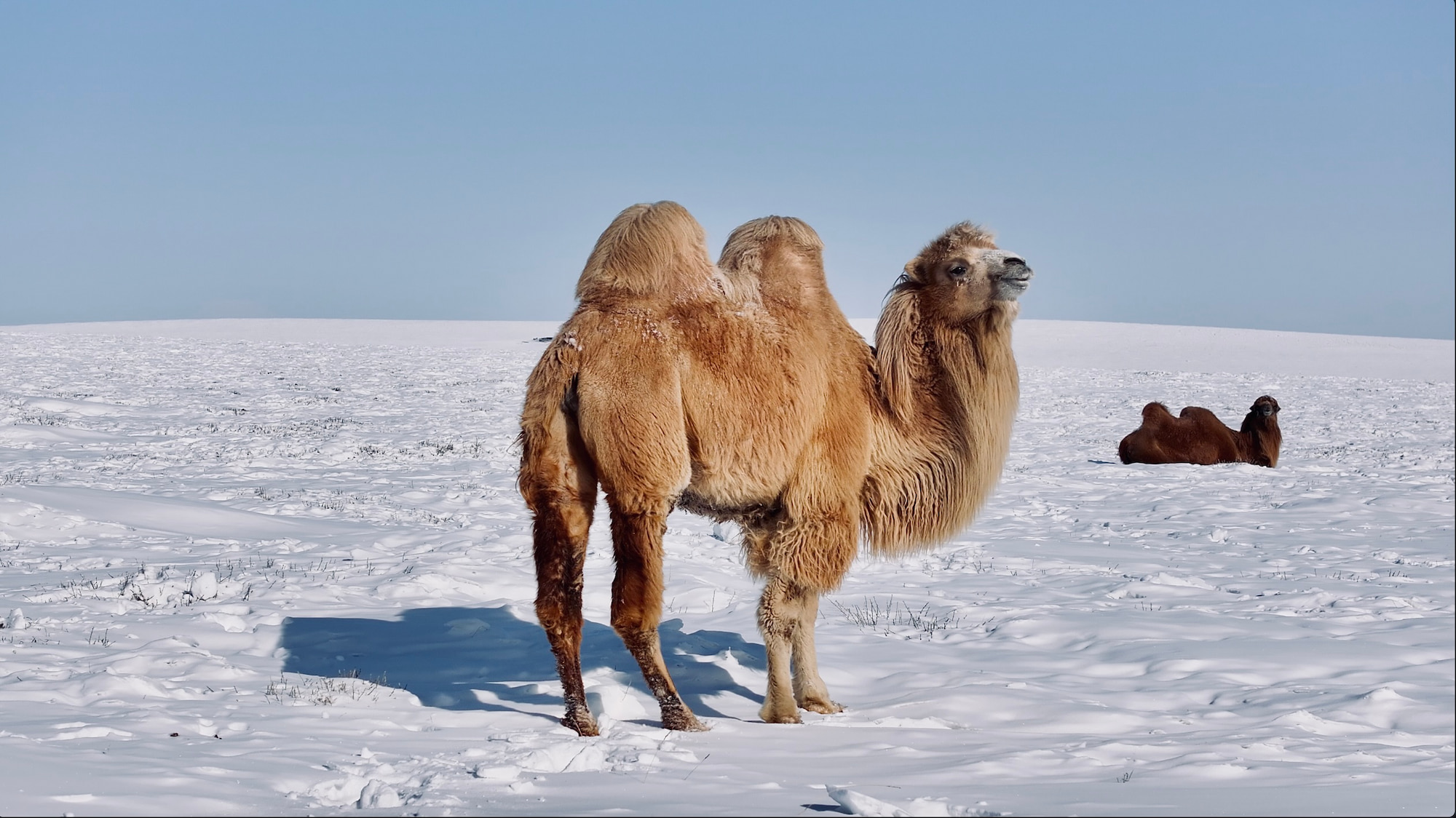
The Fascinating Dance of Mongolia's Weather: Four Seasons in a Day in the Gobi Desert
Mongolia’s weather is a performance that is constantly shifting and surprising. Locals often say you can experience four seasons in a single day, and it’s no exaggeration. Imagine waking up to a winter morning in Central Mongolia, with the Mongolian winter temperature so crisp and biting that you see your breath clouding. By afternoon, the average day temperature can rise dramatically, bringing a hint of summer temperatures and an almost surreal warmth that feels like stepping into another world.
A traveler once described the experience as “watching nature try on different moods.” Early morning can be frosty, with the coldest month’s temperatures hovering around 4°C or lower, reminiscent of winter’s bite. By noon, the sun rises over high mountains and valleys, lifting temperatures to a surprising 20°C, creating a brief moment of pleasant weather that feels like summer. As the afternoon settles, a spring-like breeze rustles through, filling the air with the earthy scent of fresh growth. By evening, an autumn chill creeps in, with soft, strong winds carrying the dry smell of grass, and by night, it’s back to a freezing winter cold.
Early morning can be frosty, with temperatures hovering around 4°C, reminiscent of winter’s bite. By noon, the sun rises over high mountains and valleys, lifting temperatures to 10°C or even warmer, creating a brief moment of pleasant weather that feels like summer.
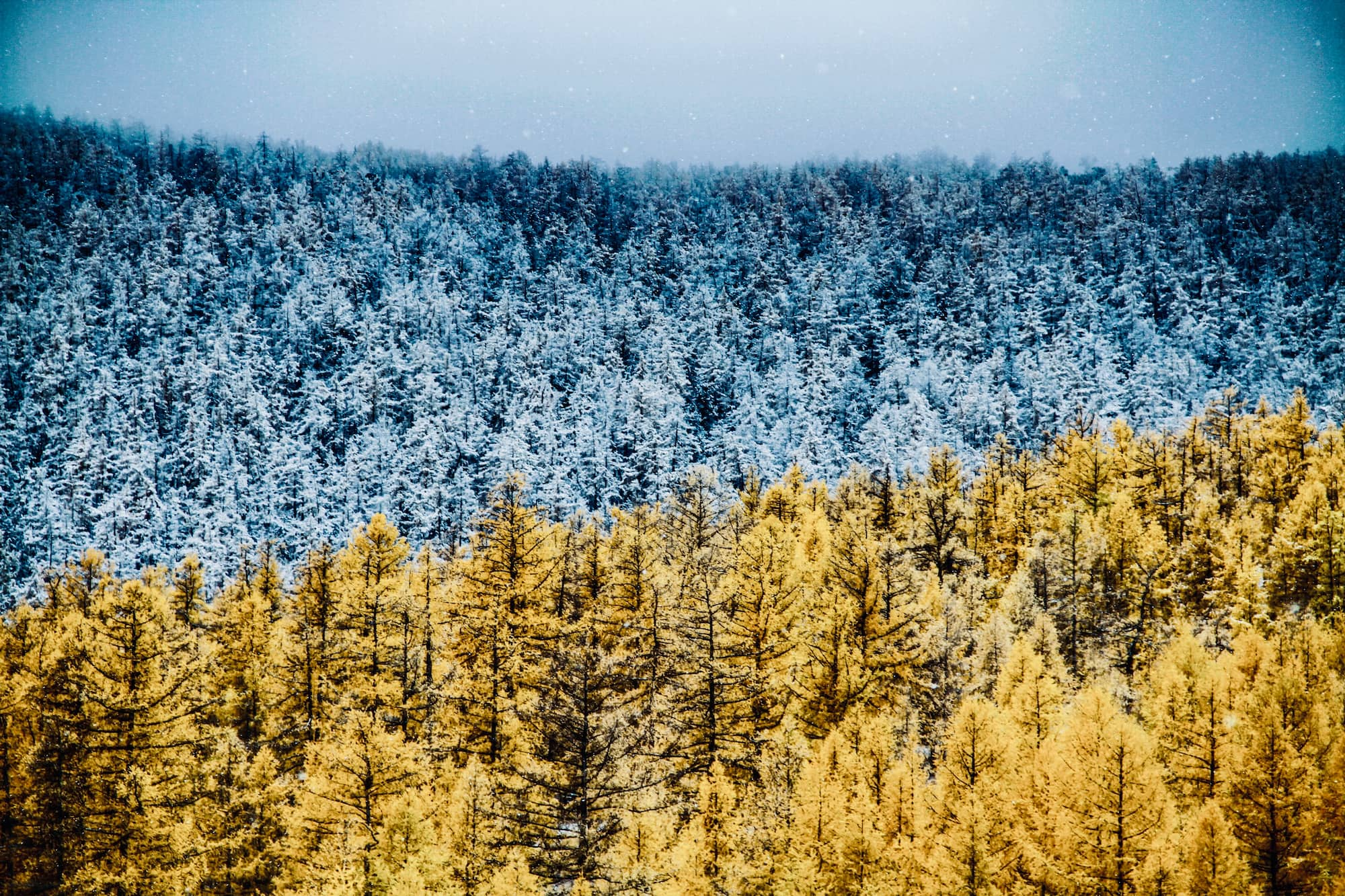
Local Wisdom and Adapting to Mongolia's Extreme Continental Climate
Mongolians have an unspoken understanding of these shifts in Mongolia’s extreme continental climate, which defines the Mongolian environment. A herder from the Khentii Mountain Ranges recalled learning to always dress in layers as a child. “You never know what the day will bring,” he explained. “We’d start the morning bundled up, shedding layers as the sun rose, only to pile them back on by evening.” He laughed, remembering his grandmother’s warning not to leave without a jacket on a warm midday, predicting a “return of winter” within hours. Sure enough, the night temperature plunged, and he was grateful for her foresight.
This extreme continental climate is part of Mongolia’s charm. The low precipitation and quick temperature changes keep life vibrant and unpredictable, a rhythm locals have long embraced. For generations, they have adapted to the fluctuating temperatures, preparing for the cold mornings and midday warmth. The intense climate, with warm summers and freezing winters, makes Mongolia’s weather a natural marvel, revealing the powerful interaction between humans and nature.
In the Gobi Desert in the extreme south, known for its stark July heat and 40°C highs, temperatures drop drastically at night, astonishing those unfamiliar with high-altitude climates. Locals have perfected this seasonal dance with nature in areas like the Orkhon Valley and Khentii Mountains, where the average annual temperature fluctuates wildly. Their routines flow with the seasons, ever in tune with the changes around them. For anyone visiting this region, this climate change experience—watching seasons flash by within hours—is unforgettable, reminding you of the fleeting beauty of life’s changing rhythms.
Observing the Nine Nines as a Traveler
For travelers, experiencing Mongolia during the Nine Nines is an invitation to witness winter through the eyes of people who embrace its challenges and celebrate its beauty. From dog sledding to ice fishing and camel trekking, visitors encounter the resilience of the Mongolian people and the stark beauty of the winter landscape. This Mongolian winter travel experience offers unique moments, revealing winter’s beauty, resilience, and the spirit of survival that has defined Mongolian nomadic life for generations.
Though winter may seem harsh, it is also a time of gathering, celebration, and connection for Mongolians. Visitors can join locals at the Ice Festival on Lake Khövsgöl or the Eagle Festival in the Altai Mountains, where Mongolians celebrate the season with games, traditional sports, and displays of skill and endurance. These festivals allow tourists to bond with locals and gain insight into the community spirit that helps them thrive during the Nine Nines.
Staying in a ger, sharing a warm meal of mutton, and drinking suutei tsai (milk tea) allows travelers to experience traditional Mongolian winter customs firsthand. Each moment offers a powerful glimpse into Mongolia’s culture and climate, where winter isn’t just endured but respected and cherished. For those ready for adventure, the Nine Nines promise an unforgettable immersion into a culture deeply connected to the natural world and bound by unity and resilience.
Joining these celebrations during the Ninth Nine, as spring begins to emerge and June approaches, is a way to feel the pulse of Mongolia—a land where the extreme continental climate shapes people who are deeply attuned to Earth’s rhythms. It’s a lovely time for travelers to observe pleasant weather shifts and a warming landscape as Mongolia’s spring arrives, transitioning from freezing winters to warmer months.
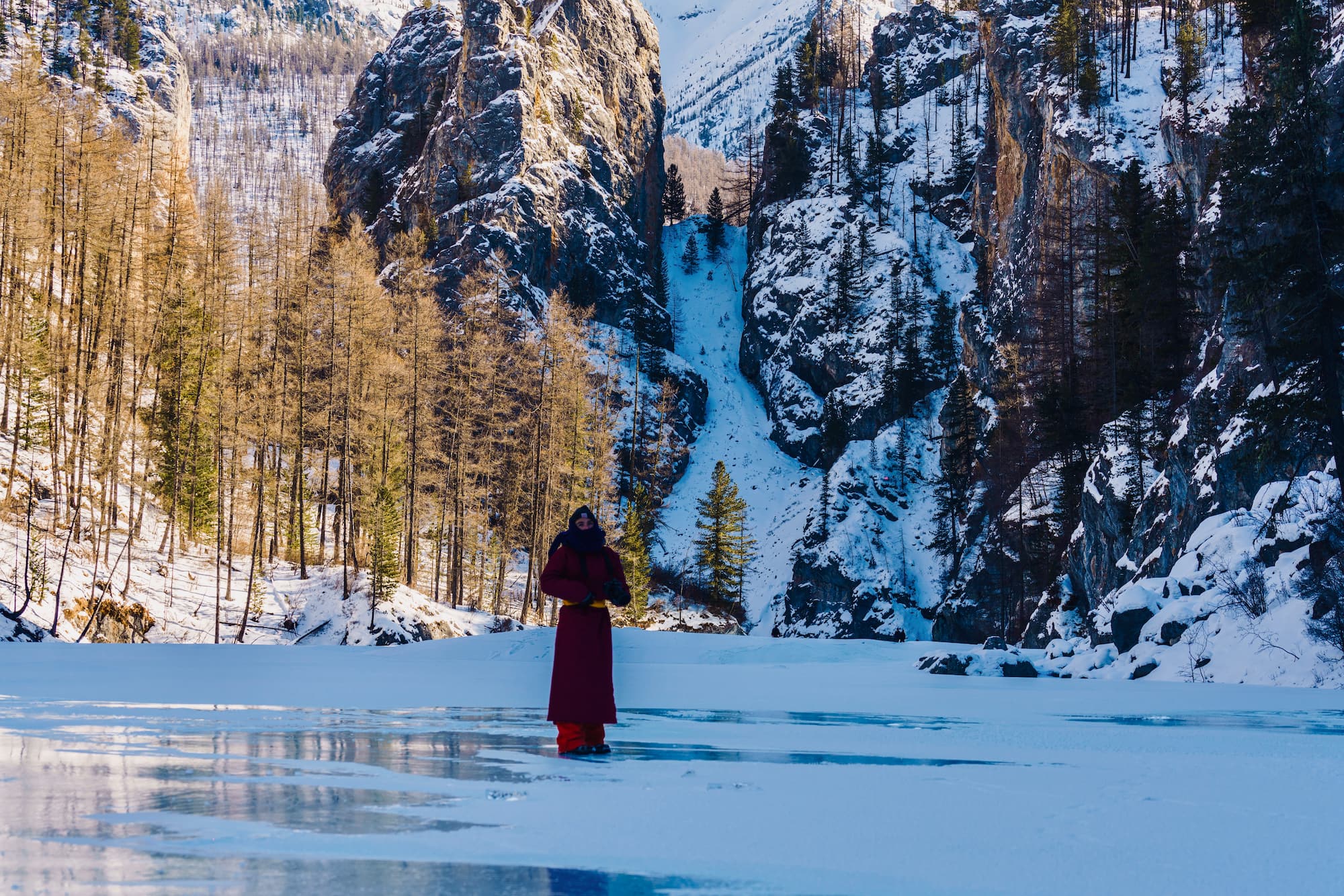
Dealing with Mongolian Winter Average Temperature as a Foreigner
Adapting to the winter temperature can be challenging, especially for travelers unaccustomed to such extreme conditions. Here are some local insights and tips to help foreigners better cope with the elements:
- Dress in Layers: Local Mongolians emphasize layering with wool and down materials. Starting with a thermal base layer, followed by insulating layers, and a heavy coat, plus a scarf, gloves, and a warm hat, is essential. Warm boots, especially if lined with fur, are highly recommended for walking on frozen ground.
- Stay Hydrated: Cold weather often masks dehydration. Locals drink tea, particularly suutei tsai, which offers hydration and warmth. Bring a thermos and refill it with tea or hot water whenever possible.
- Embrace Local Wisdom: Mongolians still rely on the Nine Nines tradition to track winter’s phases. Tourists might be surprised to learn that local herders can tell when a colder or milder period is approaching by observing the landscape and animal behavior. Engaging with locals and learning from their insights can significantly enhance the winter experience.
- Be Mentally Prepared for Isolation: Mongolian cold winters bring a sense of peaceful solitude but can also feel isolated. Prepare for quiet nights, limited social outings, and a slower pace of life. Winter in this landscape offers a reflective experience for those who embrace it.
What to Pack for a Mongolian Winter
Packing for the Mongolian winter is about maximizing warmth and comfort, as the winter temperature can be unforgiving. The Mongolia climate demands resilience, so having the right gear is essential to face the biting winds and stinging cold.
- Thermal base layers and fleece-lined clothing: Start with thermals that hug your skin, trapping warmth against the relentless chill, and add fleece layers that shield you from the stinging cold in every gust of wind.
- Windproof outer layers: Mongolia is known for strong winds that can cut through most fabrics. Opt for windproof jackets and pants to create a protective barrier against the piercing wind.
- Thick wool socks and insulated gloves: Thick wool socks insulate against the biting winds, while insulated gloves keep your hands warm and elegant, even in freezing temperatures.
- A warm hat that covers the ears: Choose a hat that fits snugly, sealing in heat and preventing frostbite on your ears as temperatures drop.
- A scarf or face mask: To shield sensitive skin from windburn and the intense chill, wear a scarf or mask.
- Waterproof, fur-lined boots: Fur-lined boots offer extra insulation against the icy ground, keeping feet warm and dry. Waterproofing is essential to withstand snow and slush.
- Moisturizer and lip balm: Dry air can quickly dehydrate your skin. A good moisturizer and lip balm prevent cracking and protect your skin against the harsh climate.
- A reliable thermos for warm drinks: In the freezing season, a thermos filled with hot tea or coffee becomes a comforting lifeline, warming you from the inside out.
- Hand and foot warmers: These warmers provide extra heat on icy days, helping you stay comfortable when temperatures plunge.
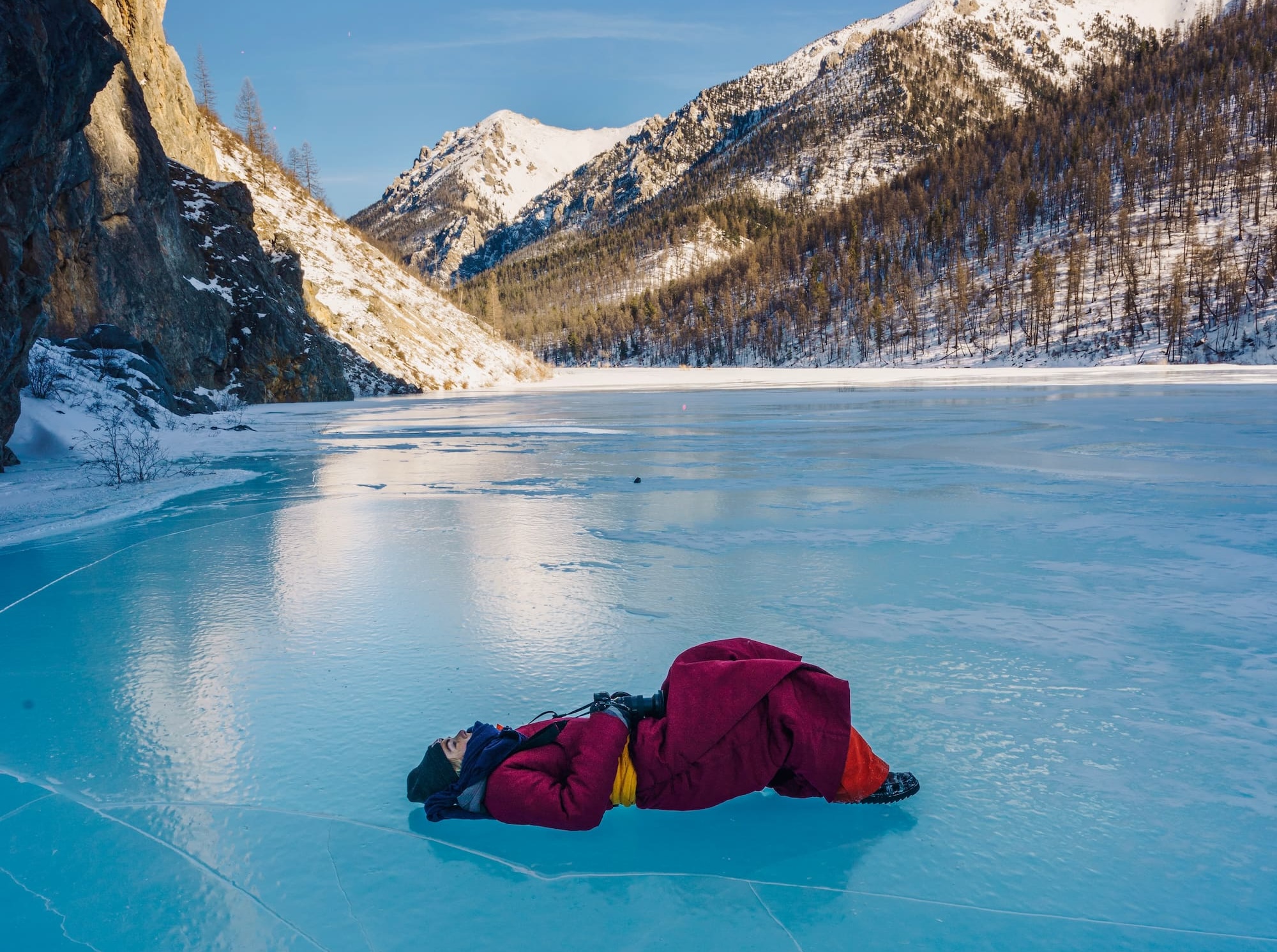
Embracing Winter's Legacy in the Mongolia Climate
The Nine Nines tradition is more than a marker of winter’s end; it’s a testament to Mongolia’s unbreakable spirit and its people’s timeless bond with the land. Each winter phase embodies resilience, unity, and a profound respect for the forces that shape life in these rugged landscapes. For travelers, experiencing the Nine Nines is an invitation to step into a story as old as the steppes, where winter’s challenges reveal the strength and harmony of Mongolia’s soul.
Embrace the journey, feel the ancient rhythm of the land, and let the Nine Nines reveal the beauty of Mongolia’s winter—a landscape where endurance is art and resilience is a timeless heritage.
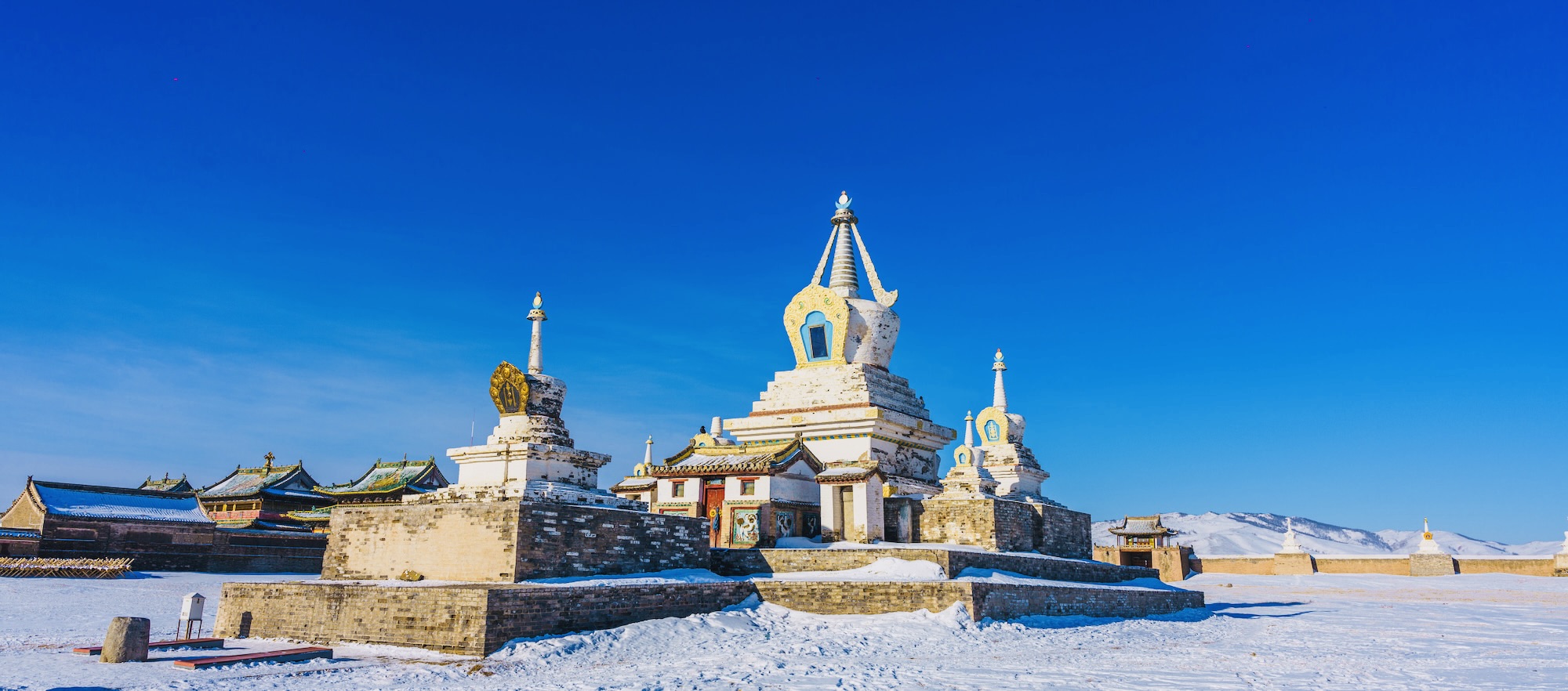
Author: Marla
 Mongolian winter temperature plunge, creating frigid winters with snow cover across mountain ranges.
Mongolian winter temperature plunge, creating frigid winters with snow cover across mountain ranges.